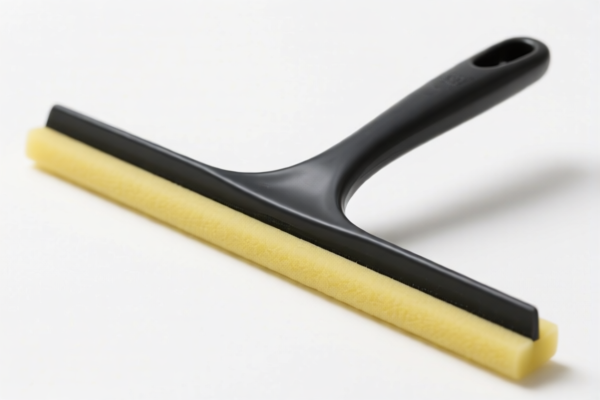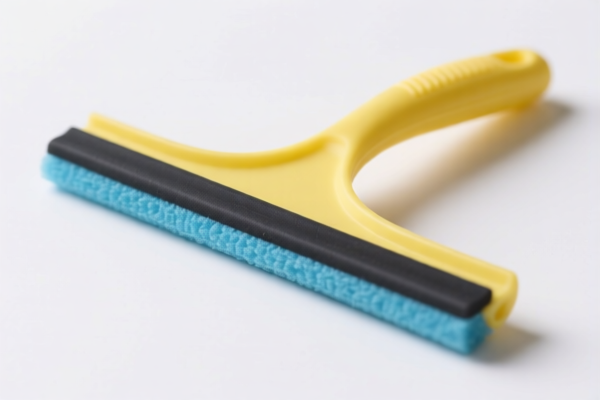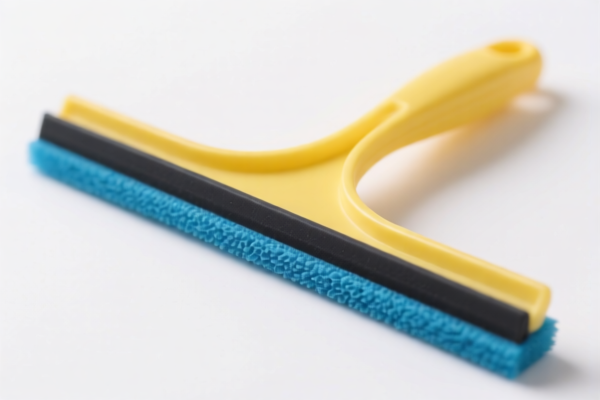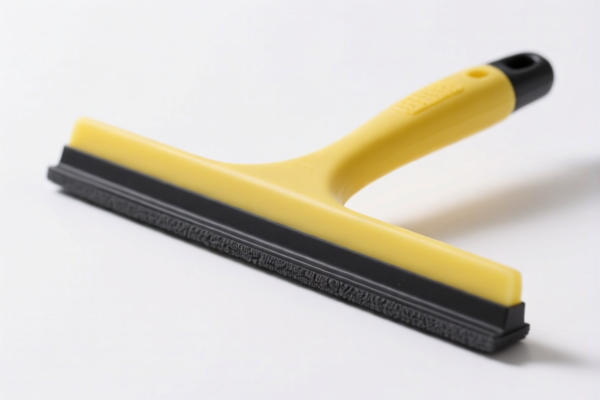| HS Code | Official Doc | Tariff Rate | Origin | Destination | Effective Date |
|---|---|---|---|---|---|
| 8424899000 | Doc | 56.8% | CN | US | 2025-05-12 |
| 8424820090 | Doc | 57.4% | CN | US | 2025-05-12 |
| 8479897000 | Doc | 55.0% | CN | US | 2025-05-12 |
| 8201906000 | Doc | 55.0% | CN | US | 2025-05-12 |
| 8201904000 | Doc | 55.0% | CN | US | 2025-05-12 |
| 8205513030 | Doc | 58.7% | CN | US | 2025-05-12 |
| 8205598000 | Doc | 58.7% | CN | US | 2025-05-12 |
| 3925900000 | Doc | 60.3% | CN | US | 2025-05-12 |
| 3926901000 | Doc | 40.9% | CN | US | 2025-05-12 |
| 3926909910 | Doc | 42.8% | CN | US | 2025-05-12 |




Floor Squeegee
A floor squeegee is a tool used to remove liquid from a floor surface, typically water, but also other liquids like cleaning solutions. It consists of a handle attached to a rubber or plastic blade that is dragged across the floor to push liquid ahead of it, collecting it for disposal or drainage.
Material
- Handle: Commonly made of metal (typically aluminum or stainless steel) for durability, or plastic for lighter weight and lower cost. Often includes a grip for comfortable handling.
- Blade: Predominantly made of rubber, often natural or synthetic. Neoprene and other specialized rubber compounds are used for different floor types and liquid resistances. Some blades incorporate felt or foam backing for improved contact and absorption.
- Frame: Can be metal (aluminum, stainless steel) or plastic, providing structural support for the blade.
Purpose
The primary purpose of a floor squeegee is to efficiently remove liquid from floors, preventing slips and falls, reducing drying time, and maintaining a clean and safe environment. They are used in both residential and commercial settings.
Function
A squeegee functions by applying downward pressure and dragging the blade across the floor surface. The blade’s flexibility conforms to the floor’s irregularities, creating a seal that forces the liquid ahead of it. The liquid is then collected in a trough or pushed towards a drain. The angle of the blade is crucial for optimal performance; a steeper angle provides more pressure but requires more effort, while a shallower angle requires less effort but may leave more liquid behind.
Usage Scenarios
- Commercial Cleaning: Used extensively in supermarkets, hospitals, schools, gyms, and other public spaces for routine floor cleaning and spill control.
- Residential Cleaning: Used for cleaning kitchens, bathrooms, laundry rooms, and other areas prone to spills or wetness.
- Automotive: Used in auto detailing shops and by car enthusiasts to remove water from garage floors.
- Industrial Settings: Used in factories, warehouses, and other industrial environments to manage water and other liquids.
- Outdoor Use: Some models are designed for outdoor use, such as removing water from patios, decks, and driveways.
Common Types
- Standard Squeegees: The most common type, featuring a straight blade and a handle. Available in various widths.
- Double Blade Squeegees: Feature two blades, providing more efficient water removal and a cleaner finish.
- Foam Squeegees: Incorporate foam backing on the blade for improved absorption and contact with the floor. Suitable for textured floors.
- Pivot Head Squeegees: Feature a pivoting head that allows for better maneuverability around obstacles.
- Microfiber Squeegees: Combine a squeegee blade with a microfiber pad for both sweeping and mopping action.
- Window Squeegees (often repurposed): Smaller squeegees designed for windows can be used for small floor areas or detail work.
- Self-Adjusting Squeegees: Designed to maintain consistent pressure on uneven surfaces.
Floor squeegees fall under various classifications depending on their material and specific application. Here are the relevant HS codes based on the provided information:
-
8205513030: This code covers handtools, specifically household tools of iron or steel, including kitchen and table implements. A floor squeegee made of iron or steel would fall under this classification.
- 82: Handtools, including glass cutters.
- 05: Handtools (including glass cutters) and parts thereof.
- 51: Other handtools (including glass cutters) and parts thereof.
- 30: Household tools, and parts thereof: Of iron or steel: Kitchen and table implements.
-
8205598000: This code encompasses other handtools (including glass cutters) and parts thereof, not elsewhere specified or included. If the floor squeegee doesn’t fit neatly into the more specific categories, this code may apply.
- 82: Handtools, including glass cutters.
- 05: Handtools (including glass cutters) and parts thereof.
- 59: Other handtools (including glass cutters) and parts thereof.
- 80: Other: Other.
-
392590000: This code covers builders' ware of plastics, not elsewhere specified or included. A floor squeegee made of plastic would fall under this classification.
- 39: Plastics and articles thereof.
- 25: Plastics, in primary forms.
- 90: Builders' ware of plastics, not elsewhere specified or included: Other.
-
3926901000: This code covers other articles of plastics and articles of other materials of headings 3901 to 3914, specifically buckets and pails. While not a direct fit, a floor squeegee made of plastic could potentially be considered under this broader category.
- 39: Plastics and articles thereof.
- 26: Other articles of plastics and articles of other materials of headings 3901 to 3914.
- 90: Other: Buckets and pails.
Regarding HS code 392590000 and 3926901000, please note that the material of the floor squeegee will determine the correct classification. If the squeegee is made of plastic, these codes are relevant.
Customer Reviews
No reviews yet.